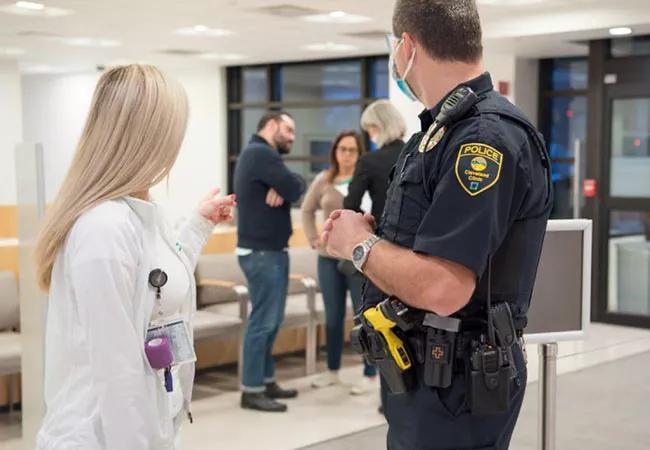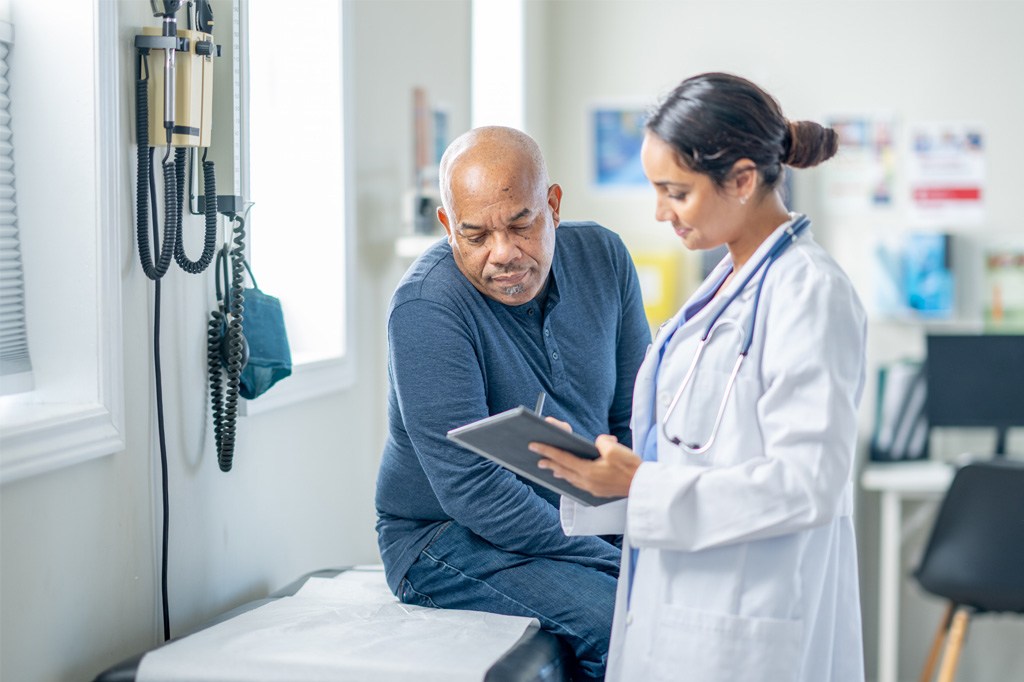Clinical Safety Officer: The Key to Maintaining Safe and Effective Clinical Environments
Clinical Safety Officer: The Key to Maintaining Safe and Effective Clinical Environments
Blog Article
Top Responsibilities of a Clinical Safety And Security Police Officer in Modern Health Care
In the developing landscape of modern healthcare, the duty of a Scientific Safety Officer has actually ended up being significantly important. These professionals are entrusted with systematically recognizing and handling clinical threats, yet their duties extend much beyond simple oversight. From creating thorough security methods to promoting a culture of safety within medical care groups, their impact is profound. Additionally, as they browse the intricacies of governing compliance and personnel training, one have to think about just how these efforts directly influence individual treatment outcomes. What are the underlying challenges they deal with in this complex role, and just how can they be properly resolved?
Risk Analysis and Management

The CSO teams up with multidisciplinary teams to gather information on occurrences and near misses, helping with a culture of transparency and continual improvement. By evaluating trends and patterns, the CSO can determine locations calling for intervention, inevitably reducing the possibility of unfavorable events. In addition, the CSO makes sure compliance with regulative criteria and standards, which offer to enhance client security and lessen responsibility dangers.
Reliable interaction is vital; the CSO should share threat findings to stakeholders, consisting of healthcare administrators, providers, and patients. Furthermore, the CSO must remain abreast of arising dangers connected with new innovations and treatment methods, adapting threat management techniques accordingly. Ultimately, by fostering an environment of positive threat management, the Medical Safety Police officer adds significantly to the general safety and security and top quality of care provided within medical care settings.
Establishing Safety And Security Protocols

In collaboration with multidisciplinary groups, the Medical Safety Police officer examines information from occurrence records and take the chance of analyses to notify protocol advancement. This consists of developing clear, actionable procedures for numerous scenarios, such as infection control, medication administration, and emergency situation reaction. Making sure that methods are not just efficient but also functional is crucial; they must be easily recognized and integrated into everyday procedures.
In Addition, the Scientific Security Officer continues to be updated on the most up to date improvements in security steps and health care modern technologies, adjusting procedures appropriately. Normal evaluations and updates of these procedures are essential to guarantee they remain reliable and pertinent in dealing with arising threats. Eventually, strong safety methods function as a foundation for a culture of safety and security, promoting an atmosphere where person treatment is prioritized and threats are methodically mitigated.
Carrying Out Educating Procedure
While security protocols supply the structure for risk monitoring, conducting reliable training sessions is essential to ensure that all medical care team excel in these protocols. A Clinical Security Policeman plays a crucial function in creating and executing extensive training programs customized to the particular requirements of numerous groups within the health care setup. This includes organizing workshops, workshops, and hands-on training that resolve existing More Info safety and security criteria, emergency treatments, and using safety and security equipment.
Furthermore, the Professional Safety and security Policeman need to evaluate the expertise gaps among employee, making certain that training sessions are appropriate and appealing. Employing a mix of training techniques, such as interactive simulations and study, can boost understanding and retention. Clinical safety officer. Regularly arranged training refresher courses also bolster personnel readiness and adaptability to advancing safety and security protocols
In addition, promoting a culture of safety and security within the company is crucial. The Clinical Safety Officer must motivate open dialogue and feedback throughout training sessions, permitting team to voice problems and share experiences. Ultimately, well-conducted training sessions empower health care experts to respond successfully to prospective risks, fostering a much safer environment for both people and staff.
Surveillance Conformity Standards
Keeping an eye on compliance standards is integral to the function of a Scientific Safety and security Policeman, guaranteeing that all security protocols are constantly stuck to throughout the health care facility. This responsibility involves normal analyses of scientific techniques, plans, and procedures to align them with well established regulatory and business requirements.
The Professional Safety Officer need to conduct organized audits and reviews to determine potential voids in conformity, fostering a proactive approach to patient security. By implementing robust tracking content systems, the policeman can properly track adherence to security protocols and rapidly deal with any type of deviations.
Furthermore, the Scientific Safety Policeman collaborates with numerous divisions to make sure that all team participants are mindful of and recognize compliance requirements. This consists of analyzing case records, examining danger management approaches, and giving comments to enhance techniques.
Moreover, the policeman has to stay updated on advancing health care guidelines and requirements, making sure that the center adjusts accordingly. By growing a culture of liability, the Scientific Safety and security Police officer plays an important role in enhancing the overall safety and security and high quality of treatment delivered to people, ultimately adding to far better health and wellness end results and business integrity.

Promoting a Culture of Security
Developing a redirected here society of safety and security within a healthcare facility is essential for reducing risks and boosting patient care. A Scientific Security Police Officer (CSO) plays a pivotal function in promoting this atmosphere by advertising accountability, transparency, and continual improvement among personnel in any way levels. The CSO establishes and executes safety protocols that encourage open communication and coverage of cases without concern of .
To successfully advertise a society of security, the CSO needs to engage in routine training sessions that emphasize the importance of individual safety and security and threat administration. These sessions need to consist of real-life instance researches and simulations to aid team identify potential dangers and comprehend their obligations in minimizing them. Additionally, the CSO ought to facilitate interdisciplinary collaboration, ensuring that all divisions collaborate to deal with safety and security worries comprehensively.
Routine evaluations and feedback devices are crucial parts of this society. The CSO has to analyze safety and security information, identify patterns, and share findings with the entire company to drive enhancement efforts. By focusing on safety and security, the CSO cultivates a setting where team really feel equipped to advocate for their patients, bring about enhanced treatment quality and ultimately, better health and wellness results.
Verdict
In final thought, the function of a Scientific Security Policeman is indispensable to cultivating a safe medical care environment. Eventually, the efforts of Medical Safety Officers ensure that safety remains a paramount emphasis within health care setups.
Inevitably, by promoting an atmosphere of aggressive danger management, the Medical Safety Officer contributes considerably to the total safety and security and top quality of treatment supplied within medical care setups.
Furthermore, the Professional Security Officer remains upgraded on the newest innovations in safety actions and medical care technologies, adapting protocols as necessary. Ultimately, well-developed safety procedures offer as a foundation for a culture of safety and security, fostering an atmosphere where person treatment is prioritized and threats are methodically mitigated.
To successfully advertise a culture of security, the CSO must involve in routine training sessions that stress the importance of individual security and threat management (Clinical safety officer). Eventually, the efforts of Scientific Safety and security Officers make sure that safety continues to be a paramount focus within health care settings
Report this page